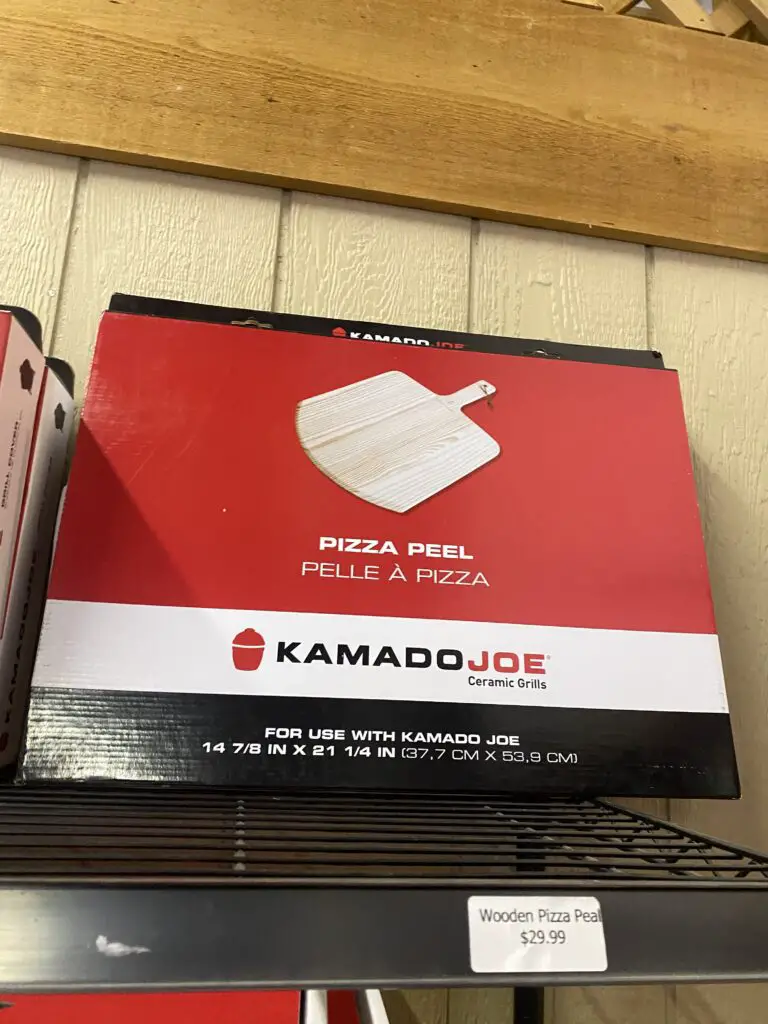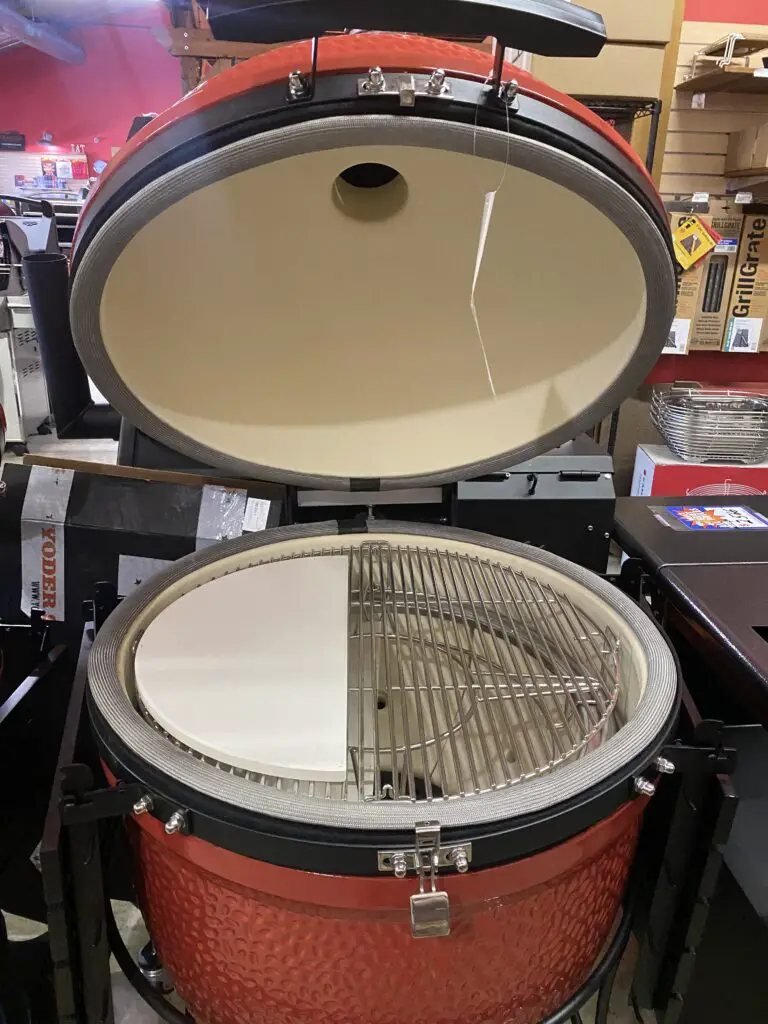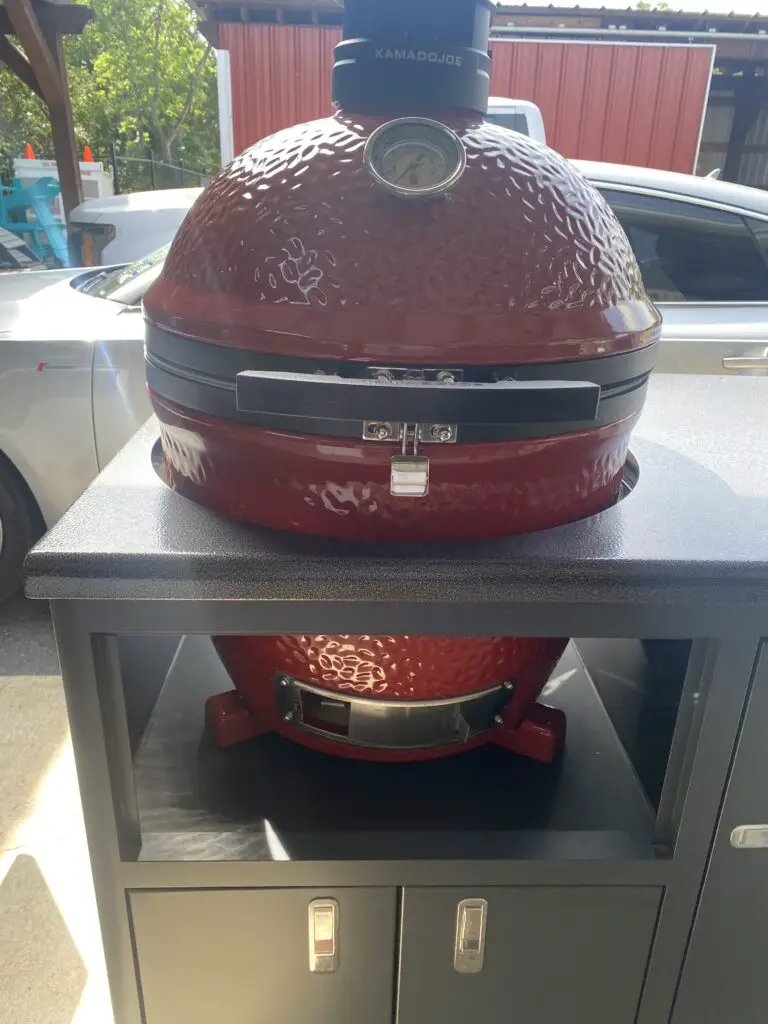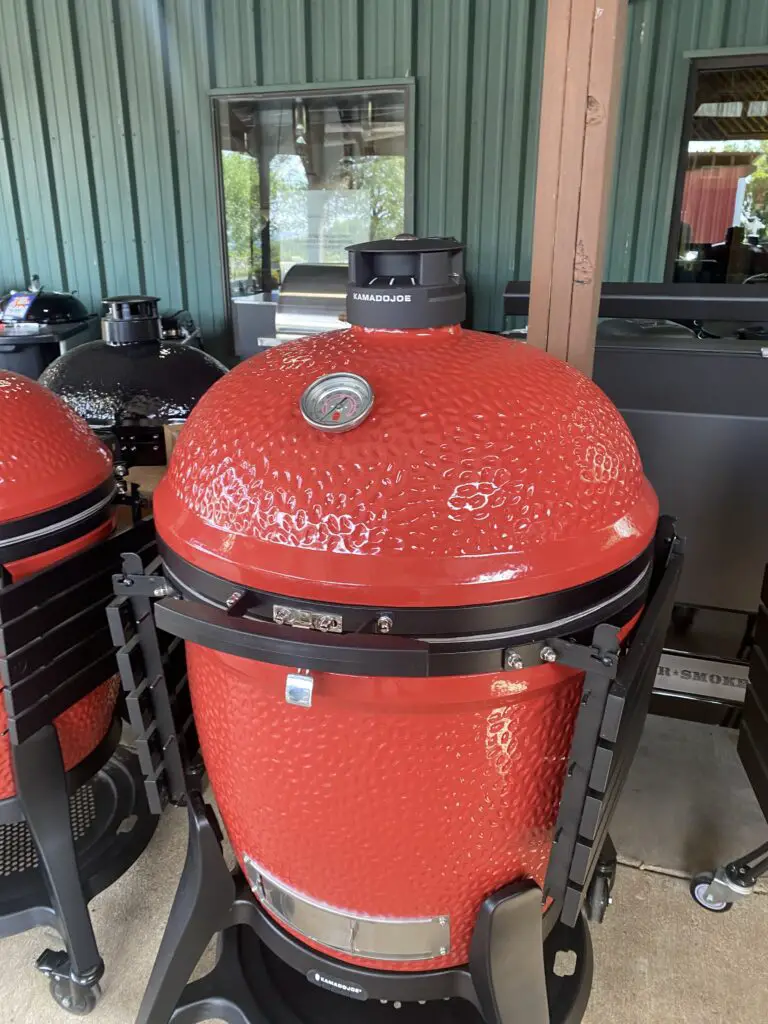We strive to provide you with authoritative, trustworthy, and expert advice. In doing so, the staff at bbqdropout.com performs extensive research, editing, and fact checking to every post on this webiste. If you feel that this article can improve, please feel free to reach us at staff@bbqdropout.com
Before continuing this article, I wanted to let you know that I have a YouTube channel where I showcase all sorts of video content related to BBQ. Subscribing would mean a lot to me, and I very much appreicate all the support!
Pizza on Kamado Joe Jr
The thermal efficiency and the ceramic radiant heating effects of a Kamado Joe Jr. make it a great way to make smoky, flavorful wood-fired pizza.
Though things like temperature control, heating strategy, the type of pizza stone you use, and even your dough recipe are all important factors.
A cordierite pizza stone is better for making pizza in a Kamado Joe than a ceramic stone. It handles high heat better, while also being less prone to cracking from thermal shock.

When it comes to your pizza setup and recipe, it’s best to use a thin wood or metal pizza peel.
This makes it easier to deliver the fresh dough pizza to the stone.
A thin peel also makes it easier to get under the pizza when you need to pull it off the hot stone. This can also be a factor in maintaining a consistent temperature when making multiple pizzas.
Your heating strategy is also important.
You need to pull the grates and the rack out of the Kamado Joe Jr. before starting a vigorous fire in the firebox.
When the lid thermometer reads 350 to 400 degrees, you can install the rack back into the firebox, though you want to put the heat deflector on the top position instead of the bottom.
Then seat the grates in the normal position and place a pizza stone on them.
Continue to let the Kamado Joe Jr. preheat, while you make your fresh dough pizza on a pizza peel.

When the dome thermometer reaches a temperature of 500 to 550 degrees, you can slide the pizza onto the preheated stone and broil until it’s golden brown on top and perfectly crispy on the bottom.
Cooking Pizza on Kamado Joe Jr
Proper preheating is critical for making a great pizza on a Kamado Joe Jr. You want to give the ceramic interior of the domed lid time to absorb a lot of heat energy.

The radiant effect of the hot ceramic will then act like a broiler to melt the cheese and cook the toppings while the heat of the pizza stone bakes the crispy crust.
Can You Make Pizza on a Kamado Joe Jr?
The radiant heat of a Kamado Joe Jr. is great for making pizza.
You could even argue that the close proximity of the ceramic dome does a better job of helping to broil the toppings and cheese than its big brother the Kamado Joe Classic.
How Do You Make Pizza on a Kamado Joe Jr
Setting up your Kamado Joe Jr to make pizza starts with setting your heat deflector higher to create more of a broiler effect.
This closer distance with minimal air gap optimizes the broiling effect on the bottom of the crust to get it nice and crispy. This is as simple as setting the internal rack in the firebox with the heat deflector on the top of the rack rather than at the bottom.
The cooking grid goes in its normal place and you set the pizza stone on top of it.

This produces a minimal air gap between the bottom of the pizza stone and the heat deflector.
It’s important to use a fresh dough recipe that uses quality bread flour and has an above-average water content.
This will both trap steam to create a soft fluffy interior, while still giving you a nice crispy crust.
You can use the following steps to make a great New York-style pizza on your Kamado Joe Jr.
Step One: Remove the grill grates and the heat deflector to start a hot-burning fire.
Your initial target temperature is 350 to 400 degrees. Letting it come up to this heat without the internal components inside also helps the upper ceramic sidewalls and lid to absorb the maximum amount of heat energy.
Step Two: Once the heat on the lid thermometer reads between 350 to 400 degrees, you can install the heat deflector on the top of the rack.
You should then set the grill grates in place and put the pizza stone on top of it.
Step Three: Allow the Joe Jr to continue to heat up until the dome thermometer reaches 500 to 550 degrees.
Step Four: Prepare your fresh dough pizza on a metal or a thin pizza peel.
Step Five: Place the pizza directly on the pizza stone. Use the peel to rotate the pizza a quarter turn every two to three minutes to ensure that the bottom of the pizza crust is baking evenly.

Step Six: Remove the pizza from the pizza stone when the cheese is fully melted, with hints of golden brown on the crust. Give it 3 to 5 minutes to cool before cutting.
This will prevent the super-heated melted cheese from sticking to the pizza wheel or knife blade.
Kamado Joe Jr Pizza Setup
To make a pizza on a Kamado Joe Jr. you need to install the inner rack with the heat deflector on the top, instead of the bottom.
Though you only do this after the fire has preheated the ceramics to at least 350 to 400 degrees. Then you place the rack with the heat deflector inside, with the grate in the normal position and a pizza stone on it.
Kamado Joe Jr Pizza Stone Size
Ideally, you want a 10 to 12-inch diameter cordierite pizza stone to make a pizza on a Kamado Joe Jr.
This is the equivalent of an average medium pizza. It will allow enough airspace around the edges of the 13-inch diameter grill grates to evenly heat the ceramic domed lid.
Should You Make Pizza on a Kamado Joe Jr?
If you like wood-fired or brick oven pizzas, then you will love making pizzas on a Kamado Joe Jr.

You just have to set it up properly, and allow the ceramic sidewalls and lid to fully preheat to maximize the radiant heating effect.
Temperature for Pizza in Kamado Joe Jr.
500 to 600-degrees is the ideal target temperature for making a pizza on a Kamado Joe Jr.
While you could push the grill hotter, it’s really unnecessary. Going over 550 to 600 degrees or more can overheat the bands causing underbite or overtime issues for future cooks.
When the ceramic dome and pizza stone are properly preheated, 500 degrees is plenty hot enough to quickly make a crispy wood-fired pizza.
Do Pizzas on Kamado Joe Jr Have Smoke Flavor?
A pizza broiled on a Kamado Joe Jr. might only have a hint of smoky flavor.
Especially in the flavor of fatty meats like pepperoni and fresh sausage.
Rendered animal fat tends to pick up smoky flavors faster than bread and pizza crust.
The real advantage of a Kamado Joe Jr for making pizza is the radiant heating effect produced by the ceramics. It is as close to replicating an authentic Italian brick oven pizza as you can get without using actual bricks!
Final Thoughts
The way the ceramics heat up in a Kamado Joe Jr. makes flavorful brick-oven wood-fired pizza, without having an actual brick oven.
However, it calls for getting a couple of things dialed in properly, such as your temperature control, the heating strategy, the type of pizza stone you use, and the recipe you use for the dough.
Ideally, you want to use a 10 or 12-inch diameter cordierite pizza stone.
This material handles high heat better, while also being less prone to cracking from thermal shock than traditional ceramic pizza stones.
Your heating strategy and the way you set up the interior of the Kamado Joe Jr are also important.
Before starting a vigorous fire in the firebox, you should take out the grates, and the internal components.
Once the thermometer on the dome reads 350 to 400 degrees, you can install the rack back into the firebox.
Except you install the heat deflector on the top position instead of the bottom. Then seat the grates in the normal position and place a pizza stone on them.
Allow the Kamado Joe Jr. time to fully preheat, while you prepare your fresh dough pizza on a pizza peel.

Once the dome thermometer reads 500 to 550 degrees, you slide the pizza onto the preheated stone.
The heat of the stone will bake the bottom into a perfectly crispy crust, while the radiant heat from the ceramic lid broils the toppings and cheese to a beautiful golden brown.
Robert is a certified Pitmaster, with over a decade of experience in smoking the best meats you’ll ever feast upon. He also has a Bachelor of Business Administration from the University of Texas at San Antonio. When he’s not researching technical topics, he’s most likely barbecuing in his backyard.
